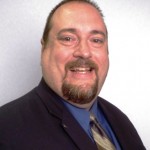Almost 20 years ago, Oscar Mayer crushed my dreams when it told me I didn’t quite cut the mustard to drive the 27-foot long Weinermobile. I was one of 36 finalists, but they chose only 12 to go hot-dogging around the country for a year.
I quickly recovered, joined a public relations agency and haven’t looked back since. For most of that time, I have been doing PR for consumer technology – everything from 3D game controllers and the first professional cyber-athletes, to online shopping, a free online dating service (you shouldn’t have to pay for love) and new forms of cash.
The realm of consumer PR is broad, and there are dozens of subspecialties within it. From beverage and restaurant PR, to music, technology, travel and consumer services, more than 70 percent of the U.S. economy deals with consumers.
Consumer PR is a crowded field, and even with the social media explosion, you are fighting thousands of others for the same slice of attention. That, to me, is one thing that makes consumer PR so exciting. My day is one of non-stop motion.
Every day is different, but it usually begins by checking my iPhone before I get out of bed to see the latest news and developments – spending time on Facebook, Radian6, Google+ and Twitter to see what I need to know. When I get into the office, I start juggling the demands of a number of clients and come up with creative ideas ranging from surveys and videos to analyzing Google Analytics and HootSuite metrics to see what is driving traffic to my clients’ websites.
The best part of my day is brainstorming with all the creative professionals at our agency. Just last week we came up with a city-by-city heatmap highlighting the worst cases of identity manipulation and a creative campaign for Comic-Con. What happens on a daily basis changes quite a bit. However, there are a few pieces of advice that I have found useful over the years. The following are four tips for new professionals looking to break into and develop their careers in consumer:
-
If you don’t love what you are doing, don’t do it: Find something else, both for your own personal satisfaction and because people that have a passion for their job will lap you and leave you in the dust. Every single day I am excited to wake up, see what has happened with my clients and their competitors and go to work with a great group of people.
-
Every opportunity is a networking opportunity – and I mean every place: Work, dinner, church, sitting in the airport or playing sports. Keep in mind, networking does not mean “What can you do for me?” Good networking involves helping others and making connections, just like investing in your 401k. At first, your network seems small, but if you keep it up, the beauty of compound interest gives even someone who is an average networker an amazing web of contacts and influencers in just five to 10 years. Don’t be intimidated just because someone has been doing consumer PR longer than you have been alive. You have a valuable point of view and experiences they do not have. Share it.Networking is also the best way to break through the HR roadblock and get an interview and possibly your dream job. Having a news snippet to share at the interview to show you have done your research is also strongly suggested.
-
Change is constant: With consumer PR, change is constant. You need to keep up on the latest trends. Ten million people joined Google+ in the first three weeks–is that something your company or clients should leverage? The only way to know is to try it yourself. This often means putting the time in after work. Just keep in mind, you need to look at things through your clients’ and your company’s eyes, not your own. This also means you shouldn’t be wedded to any one thing. Discussing a Facebook strategy is the wrong question. You should be looking at the social networking strategy. Facebook may not even be here in five years.
- Everything matters: As a consumer PR pro, you need to be a subject matter expert, but your subjects can be featured in everything from “Sex in the City” to USA Today; TechCrunch to “Captain America.” This means you need to keep up with quite a bit. Read constantly. You will be amazed when an obscure piece of knowledge helps you connect with a reporter or a client.
Consumer PR is a thriving, dynamic market with an opportunity for you to do whatever you want. If you have a goal – go for it. However, keep yourself open to new experiences. In consumer PR, you can be sure you will have a new challenge every day.
 Mark W. McClennan, APR, is a senior vice president at Schwartz Communications, where he heads the research group and co-leads the consumer technology practice. In his spare time, he writes blog posts on how Dora the Explorer teaches you all you need to know about PR and does stand-up comedy.
Mark W. McClennan, APR, is a senior vice president at Schwartz Communications, where he heads the research group and co-leads the consumer technology practice. In his spare time, he writes blog posts on how Dora the Explorer teaches you all you need to know about PR and does stand-up comedy.




